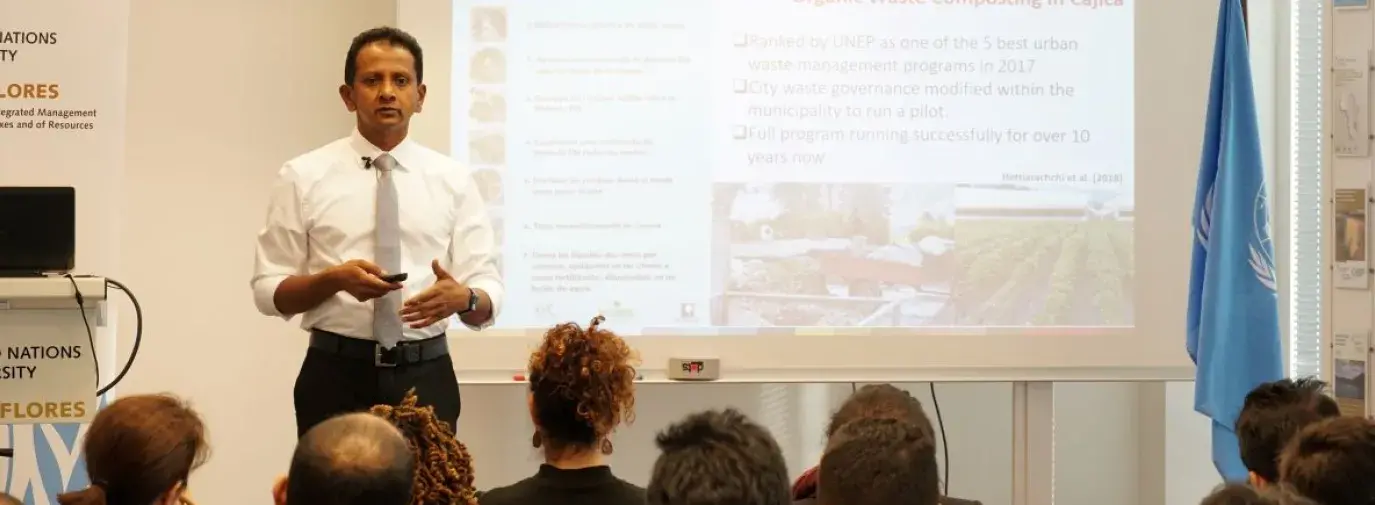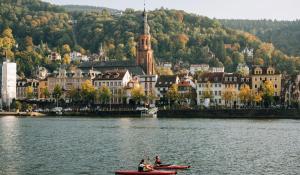
At the 29th United Nations Climate Change Conference (COP29) about Small Island Developing States (SIDS), U.N. Secretary-General António Guterres addressed the disproportionate risks their communities face in the era of the climate crisis and the shared challenges to sustainable development, including limited resources, susceptibility to natural disasters, excessive dependence on international trade, and beyond. In the Caribbean, home to a majority of SIDS, islands are seven times more likely to be hit by a hurricane than larger states, and SIDS’ GDP cost of disasters is four times that for larger nations.
“You have every right to be angry, and I am too,” Guterres said. “You are on the sharp end of a colossal injustice.”
Five of these states are unincorporated territories of the United States: Puerto Rico, U.S. Virgin Islands, Guam, the Northern Mariana Islands, and American Samoa. The spoils of America’s imperialist ambitions, these unincorporated territories are completely subject to the federal government—participation in presidential elections end after the primaries, they have no senators, and only one non-voting member in the U.S. House of Representatives. Aside from American Samoa, whose residents are considered U.S. nationals and not citizens, if someone from the other four territories lives in and has formal residency in one of the 50 states or Washington D.C., they can vote in presidential elections beyond the primaries.
Like other SIDS, they are also pivotal in the global fight for environmental justice and yet too long neglected. Essayist Doug Mack wrote in his book “The Not-Quite States of America”:
A century or so ago, Americans didn’t just know about the territories but cared about them, argued about them. But what changed? How and why did they disappear from the national conversation? The territories have made us who we are. They represent the USA’s place in the world. They’ve been a reflection of our national mood in nearly every period of American history.
Prioritizing the welfare of places and people forcibly annexed in Western countries’ pursuits of empire and now at disproportionate risk to climate change is not only a moral imperative for humanity, but also a necessary part of the road to climate resilience and sustainability.
Fragile Environments, Resilient People
SIDS take up a small amount of landmass space on our planet—just 0.5% of the world’s surface area. Their environmental contributions though, are massive, boasting 20% of the world’s biodiversity and 40% of the world’s coral reefs. Between this scale of ecological diversity and Indigenous practices that eschew the exploitive treatment of available resources characterizing most mainland economies, these communities are often overlooked as leaders in the development of climate sustainability.
The U.N. fears low-lying islands could become uninhabitable by the end of the century, leading to mass population displacement. While these territories inflict minimal damage on the planet, they suffer the consequences of our shifting environments on a far more intense scale than the countries who contribute the most to climate change. 75% of their coral reefs are threatened by climate damage, annual costs of natural disasters are typically 1% to 8% of an island state’s entire GDP, and electric costs are the highest in the world because of imported fossil fuels. Most (94%) of residents live within 100km of a coral reef, a main source of food security, economic revenue from tourism and recreation, shoreline protection, and biodiversity.

Dr. Hiroshan Hettiarachchi, dean and professor of civil engineering at the University of Guam, says the context of size is critical to understand the environmental reality of our neighbors. Unreliable and unstable climate activities wreak disastrous havoc to infrastructure and livelihoods, and island states’
isolation and limitations are “huge barriers to a fast recovery.”
Facing an uphill battle, these small but resilient communities are some of the most ambitious and aggressive leaders in the climate space. In 2023, 40 SIDS met and exceeded climate goals, installing 8.7 gigawatts of renewables capacity. In 2018, the Republic of Seychelles launched the world’s first sovereign blue bond, a financial tool that helps raise capital for marine and ocean conservancy projects. Across the Indian Ocean, the Maldives saw a decrease in plastic pollution after launching the Maldives Authentic Crafts Cooperative Society, a women-led program empowering women with paid opportunities to produce reusable cloth bags and reduce single-use plastics.
Most of these successes were partially funded by the Global Environment Facility, a multilateral environmental fund, and future success won’t be possible without continued aid. Support of this aid is especially crucial. During Biden’s administration, $4 billion of a pledged $11.4 billion dedicated to climate projects helped low-income countries with things like renewable energy and protection from natural disasters. This money came from USAID, which is now under attack from the Trump administration.
Demand Action, Leadership, Justice
Aid from larger countries is not only vital to contending with climate change, but also part of a much larger debt that these island communities are owed.
“Economically powerful countries have benefited from exploiting natural resources in the world while emitting carbon dioxide and methane for over 250 years,” Hettiarachchi explains. “The damage they have caused to the environment for their economic gain is now felt by all of us. It’s only fair they take the lead in helping other nations.”
In May 2024, the fourth International Conference on Small Island Developing States (SIDS4) adopted The Antigua and Barbuda Agenda for SIDS (ABAS)—a Renewed Declaration for Resilient Prosperity. This declaration aims to help island states achieve Sustainable Development Goals and lists necessary help from the international community.
Economically powerful countries have benefited from exploiting natural resources in the world while emitting carbon dioxide and methane for over 250 years.”
— Dr. Hiroshan Hettiarachchi
Hettiarachchi emphasizes how those who don’t live in vulnerable states have a responsibility to understand the unique risks and challenges those communities are grappling with. For Hettiarachchi, his work as a civil engineer helped broaden his understanding about the effects of climate change. He recalls how despite growing up in Sri Lanka, which is itself an island, it “took years” for him to understand how the neighboring Maldives was affected more severely than his home.
“But wealth or power means nothing if the majority in those countries do not understand the real issues SIDS are facing currently,” Hettiarachchi says.
At COP29, however, the international community did not step up. Less wealthy countries will receive $300 billion annually through 2035 for environmental help, which is far less than the amount needed: $1.3 trillion annually through 2030.
“Developing countries have been forced to accept half-measures, COP after COP,” said Chandni Raina, a negotiator for India at COP29. “These half-measures push the costs of climate change on to the people least responsible but suffering the worst consequences.”
A Responsibility to Each Other
Cancer, asthma, cardiovascular disease, lead poisoning. All of these and more are health risks associated with environmental damage and bad environmental policies. Those who come from communities like the Marshall Islands know from lived experience how severe the impacts of environmental racism—often in the name of national security and scientific discovery—can be.
“The U.S. carried out several nuclear tests in the Marshall Islands from 1946 to 1958, making devastating
consequences for the health and environment of the islands and their inhabitants,” Hettiarachchi says.
The islands’ population during this time was between 11,000 and 14,000 people, all suffering from the equivalent of 1.6 Hiroshima bombs being detonated every day for 12 years, according to UNHCR. Jeton Anjain, previously Minister of Health and a senator of the Marshall Islands Parliament, recounted the fallout from Castle Bravo, the largest test: “The atoll was covered with a fine, white, powder-like substance. No one knew it was radioactive fallout. The children played in the ‘snow.’ They ate it.”
The National Cancer Institute revealed in 2005 that for people exposed to the fallout of these tests, the risk of contracting cancer was greater than one in three. Seen as disposable because of the islands’ remote location and “sparse” population, the U.S. military did not pause to consider the wellbeing of the Marshallese. As of 2018, about a third of the Marshall Islands’ population has relocated to mainland U.S., mostly due to unemployment (rates hover around 40% and a 1986 law called the Compact of Free Association, which granted the Islands independence from the U.S., allows Marshallese citizens to live and work in the U.S. without visas or work permits) and climate change.
“Punishing king tides combined with persistent drought have wreaked havoc on dwindling fresh water supplies,” Mike Taibbi reported for PBS NewsHour. “The view among climate experts, and many here who keep rebuilding their sea walls against the warming, rising Pacific, is that the islands are sinking, if not disappearing.”
As powerful, more developed countries have historically justified their occupation of small island states by citing reasons of national security and scientific study, they also bear the responsibility to provide the funding, time, energy, and resources those communities now need to build and maintain systems of climate resiliency to ensure their safety.
“The objective of any help should be focused on improving island sustainability,” Hettiarachchi recommends. “Globalization has given many good things to the SIDS, but it has also taken away sustainable living practices the island communities have practiced for thousands of years.”
Climate change is bigger than all of us, but especially for small island communities that contribute the least to environmental disaster but face insurmountable public debt due to disproportionate damage and neglect. The ingenuity and practices already exist among these diverse and astonishing places to care properly for our planet, it is resources and support that are sorely needed.







